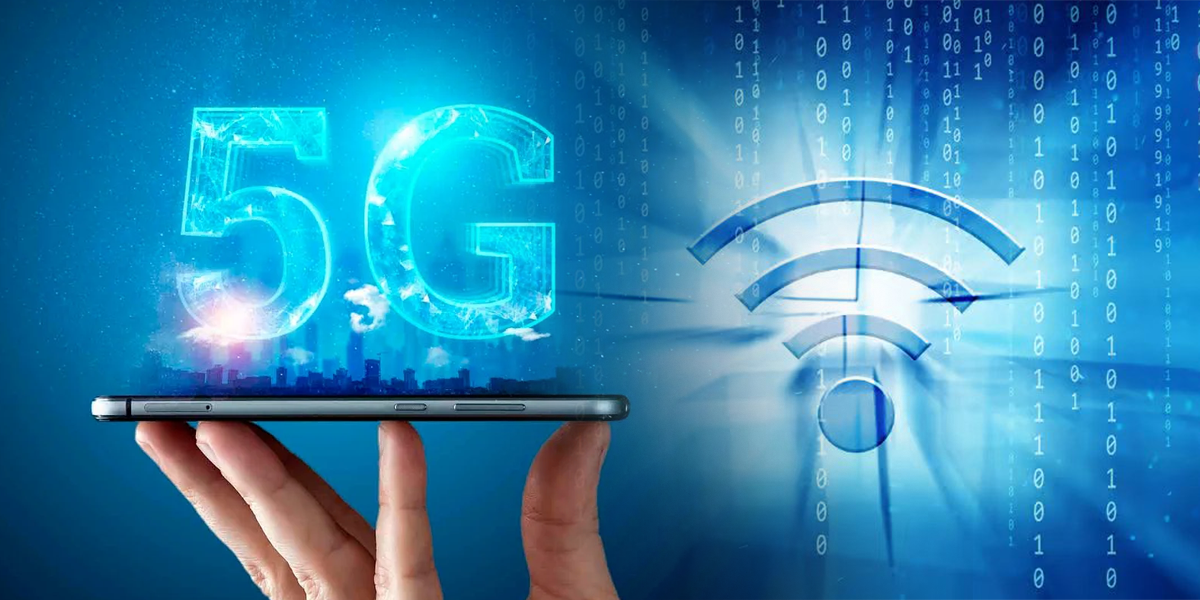With India on the cusp of a nationwide 5G rollout, every day the headlines are full of new announcements, policies, and telecom decisions. 5G Technology, the 5th Generation cellular telecommunication technology, will soon reach the last mile of the country and the excitement in the cellular industry is evident. But this is all about the 5G cellular communication network, what about 5G LAN technology? There hasn’t been much chatter around 5G LAN, while concept wise both 5G and LAN seem contradictory when put together. Let’s understand what 5G LAN is and why it is equally interesting as 5G cellular.
LAN, an abbreviation used for the term – Local Area Network, is the network used to connect a restricted local environment to the internet. The internet networks used in closed spaces like a corporate office premise or inside a home are basically LAN. And 5G LAN is when the 5th Generation technology is used in closed circuit group terminals. For use inside a specific infrastructure, 5G LAN integrates into its existing IT network to deliver network services beyond what’s possible through a regular network and bind it all locally. A 5G LAN creates a high-capacity and low-latency enterprise wireless LAN network. It also applies QoS policies for latency and creates a large coverage area with high-speed mobility for various devices such as mobile, IoT and robotics.
As for the capacity of the 5G core network, 5G LAN supports both mutual communication under the same user panel function and mutual communication under different user panel functions. This in simple terms would mean breaking the limit on the physical distance between twp devices.
One of the most significant features of 5G LAN is that it has the ability to connect with any user’s current existing data communication network and provide a friendly plug and play functionality along with mutual access.
Uses and Advantages of 5G LAN

5G LAN connects different 5G devices and facilitates building a useful mobile LAN network. Local networking through such a local network helps the infrastructure of different organisations such as enterprises, governments building, schools, and families to interconnect devices better within a specific region.
5G LAN is also revolutionary for office networks along with transforming connectivity in production environments including industries and mines. Since it can facilitate large bandwidth and low latency, 5G LAN can allow the digitization of industrial scenarios. 5G LAN enables wireless connection between different production elements in different production stages through its excellent wireless communication technology.
There is a general perception that a Wi-Fi connection already facilitates similar features as 5G LAN and thus there are no added benefits. This is, however, far from a correct observation. First of all, the Wi-Fi networks especially the Wi-Fi 4 and Wi-Fi 5 networks are not as reliable and dependable as a 5G LAN. A 5G LAN can be better at meeting the high-speed secure requirements of industries. Secondly, the maintenance cost of Wi-Fi devices and networks is relatively higher than maintaining a 5G LAN connection. Moreover, 5G LAN is powerful in managing group networks which is the primary requirement of many close circuit infrastructural needs and cannot be dependent on a Wi-Fi network.
Recommended Reads:
- Jio True 5G Network arrived “First” in Gujarat
- Airtel 5G Plus Now Available In Gurgaon
- Government Unveils Satcom Reforms for Faster 5G Deployment
